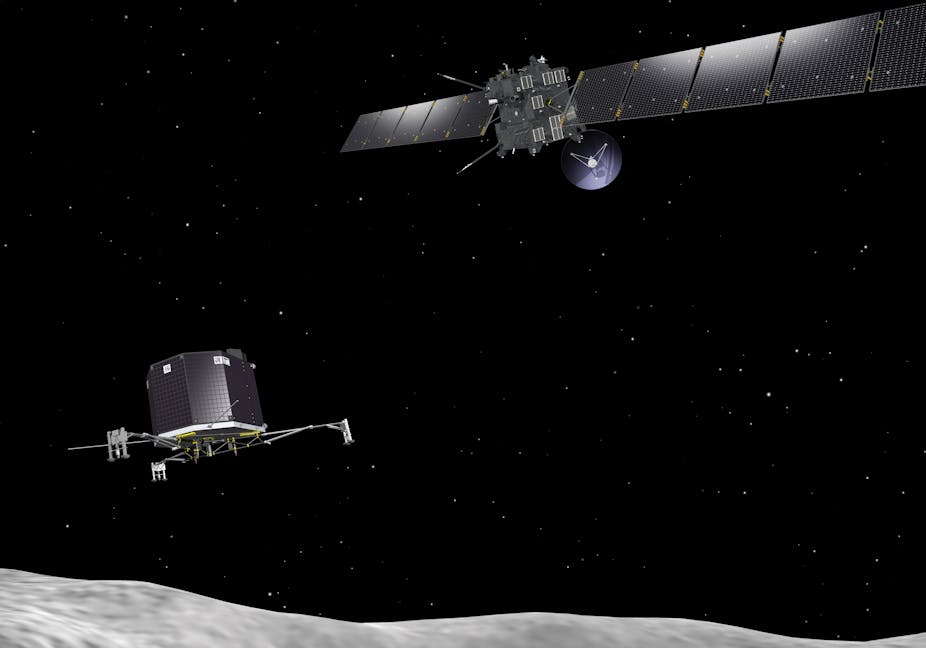Out of hibernation, Rosetta stirs at last.
As one of the scientists involved in the mission, news that the unmanned spacecraft has woken up and restored contact with Earth comes as a great relief. It contains an instrument I first began designing while working on my PhD – a project in which I have invested more than 20 years.
It was on January 14, 1993 that I drew some sketches of a concept for an instrument that could be sent to a comet. I am certain of the date because I still have those two sheets of paper. Ever since starting my PhD, I have been involved in building instruments and I have always been planning for the possibility that one day there might be a space mission that would travel to a comet, collect materials from its surface, and eventually bring them back to Earth for analysis.
Despite the long odds of achieving this, I was not fazed. Initially, prototypes were built out of bulky components, connected to an electric grid, occupying a space the size of a couple of office desks. But still, we created instruments with unique capabilities for analysing samples brought back to Earth from comets.
Then, when it was deemed financially impossible to bring such samples back to Earth, we set about making instruments that could be taken to the comet on a one-way voyage instead. Ah, the arrogance of youth … how difficult could it be to shrink one of these laboratory monsters down to the size of something that could fit in a shoe-box – not to mention powering the thing?
But we managed to do it, because, in 2004, our instrument, known as Ptolemy, was lofted into space on a ten-year journey towards the comet 67P/Churyumov-Gerasimenko. The mission, now known as Rosetta, comprises two units: the main craft, known as the orbiter, which will travel alongside the comet for many months, and Philae, the lander, which is destined to be set down on the surface of the comet, and tell us more about it.
Some aspects of comets have been studied for hundreds of years. Take orbits for instance – we know all about the route 67P takes. This is why it has been possible to place Rosetta on the right trajectory, although it took ten years. When the spacecraft woke up, it was exactly where we expected it to be, both in relation to the bodies of the solar system and to the comet itself.
The instruments on the two parts are configured to answer many questions about the comet that could not be answered by instruments on Earth: what does it look like, how big is it, what colour, how hard is it, what is the temperature on it?
We know comets are in large part made of water (as ice). The questions that really interest us are: what is the relationship of water in comets to that of other occurrences of the molecule? And what is the relationship between water on Earth with that in comets? Although water – whether it is here on Earth or anywhere else in the Universe – is composed of two elements, it is possible to distinguish the water’s source because of subtle differences in the isotopes of hydrogen and oxygen it contains. So, on Earth, for instance, it would be possible to tell if a water sample came from Antarctica or from a domestic tap. But to do this you need a sophisticated instrument – Ptolemy is just such a device.
Now that Rosetta has woken up, we go back to waiting and hoping for the ongoing success of the mission. We hope the spacecraft will be operational, that our instrument survived hibernation, that the landing will be successful, that the drilling system will deliver samples of surface materials to Ptolemy, that the instrument operates as intended, and that the data can be communicated from the lander to the orbiter, and then back to Earth. Only then can we answer some of our questions. Even though Rosetta has woken up, many things still need to go right. Here’s to hoping that they do.

